Table of contents
Browse categories
Browse authors
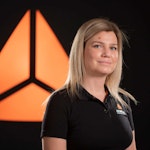 AL
ALAlessia Longo
 AH
AHAl Hoge
 AB
ABAljaž Blažun
 BJ
BJBernard Jerman
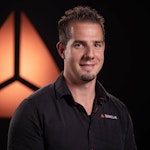 BČ
BČBojan Čontala
 CF
CFCarsten Frederiksen
 CS
CSCarsten Stjernfelt
 DC
DCDaniel Colmenares
 DF
DFDino Florjančič
 EB
EBEmanuele Burgognoni
 EK
EKEva Kalšek
 FB
FBFranck Beranger
 GR
GRGabriele Ribichini
Glacier Chen
 GS
GSGrant Maloy Smith
 HB
HBHelmut Behmüller
 IB
IBIza Burnik
 JO
JOJaka Ogorevc
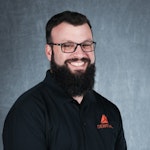 JR
JRJake Rosenthal
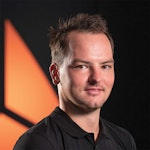 JS
JSJernej Sirk
 JM
JMJohn Miller
 KM
KMKarla Yera Morales
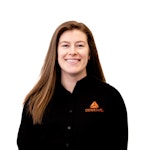 KD
KDKayla Day
 KS
KSKonrad Schweiger
Leslie Wang
 LS
LSLoïc Siret
 LJ
LJLuka Jerman
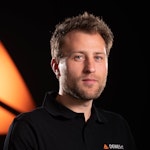 MB
MBMarco Behmer
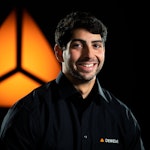 MR
MRMarco Ribichini
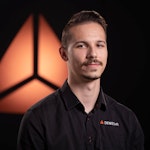 ML
MLMatic Lebar
 MS
MSMatjaž Strniša
 ME
MEMatthew Engquist
 ME
MEMichael Elmerick
 NP
NPNicolas Phan
 OM
OMOwen Maginity
 PF
PFPatrick Fu
 PR
PRPrimož Rome
 RM
RMRok Mesar
 RS
RSRupert Schwarz
 SA
SASamuele Ardizio
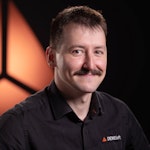 SK
SKSimon Kodrič
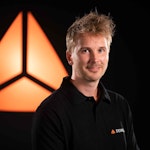 SG
SGSøren Linnet Gjelstrup
 TH
THThorsten Hartleb
 TV
TVTirin Varghese
 UK
UKUrban Kuhar
Valentino Pagliara
 VS
VSVid Selič
 WK
WKWill Kooiker
How Dewesoft USA Equipped BMW XM with the Ultimate Vehicle Testing DAQ

November 26, 2025
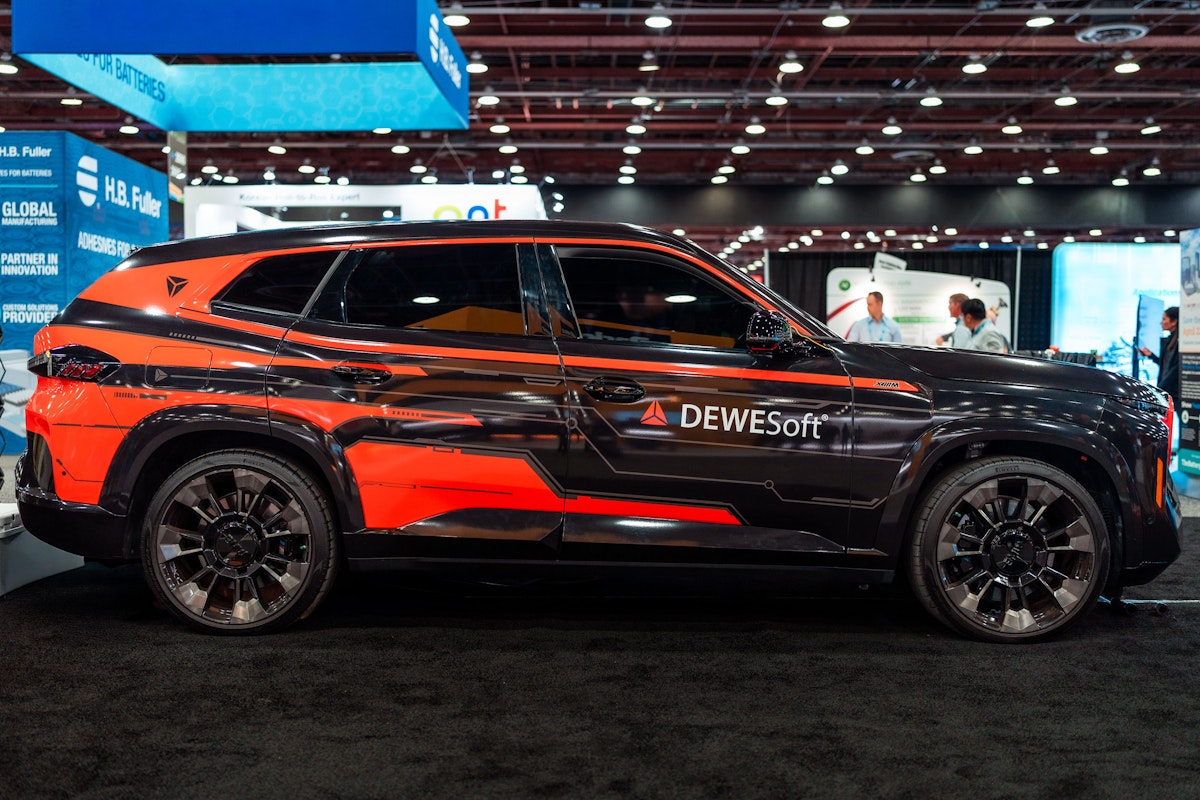
Introduction
Loud, large, fast, and equipped with the best in data acquisition, the BMW XM serves as Dewesoft's ultimate demonstration platform in the USA. Wait - a BMW is an American car? In fact, the XM model is manufactured by BMW in Spartanburg, South Carolina. This plant is the BMW Group's only assembly facility in America and serves as the global competence center for all X models. This high-performance, plugin-hybrid is packed with the latest automotive technology.
Thousands of people around the world, especially in Europe, have seen the Dewesoft BMW 330e, which our colleagues at Dewesoft headquarters in Slovenia have extensively instrumented with Dewesoft DAQ instruments and sensors. Now joining the team is the all-American BMW XM, equipped with Dewesoft instrumentation. This impressive feat of engineering is Dewesoft USA’s vehicle testing demonstrator and show car.
Background
From the humble Ford Model T to the flashy V8-powered muscle cars and large SUVs of today, America has been a major force in automotive innovation and technology. Our goal at Dewesoft is to help car makers continuously improve their cars using top-notch testing instruments.
In the early days, testing cars was highly subjective. For example, engineers designed a new suspension system and built one for testing. They installed it and sent a driver onto a track to test it. They’d interview the driver afterwards to get his opinion about the ride.
Subjective measurements like that have been replaced by objective testing using modern data acquisition systems. These systems precisely record data from analog sensors of all types, digital data from encoders and data buses such as CAN, CAN FD, and others, inertial navigation systems, Global Navigation Satellite Systems such as GPS, and video cameras.
Why did we build it?
Dewesoft instruments help manufacturers design and build safer and better cars, trucks, and motorcycles. Virtually all major car, truck, and motorcycle manufacturers worldwide use Dewesoft DAQ systems, including Ford, General Motors, Mercedes, BMW, Audi, Volvo, Tesla, and many others.
We cover a wide range of vehicle testing applications, such as:
Combustion analysis
Electrical power testing
Acoustics and NVH
EMC chamber testing
ADAS testing (Advanced Driver Assistance Systems)
Vehicle dynamics testing
Vehicle performance testing
Road-load data acquisition
Durability and fatigue testing
and many more
To show these capabilities, our colleagues at Dewesoft headquarters in Slovenia built a “show car” with our systems and sensors installed and working. In addition to looking impressive at trade shows, the show car allows us to demonstrate the full range of our testing capabilities to automotive engineers and technicians at their facilities and test tracks.
Read more about the development of the original Dewesoft show car:
It’s too expensive to ship a show car around the world, and it’s in constant demand, so we decided to build one here in America. After a search, we selected a BMW, also known as “the ultimate driving machine.”
We wanted a hybrid vehicle to showcase our EV and HEV power analysis solutions alongside our internal combustion engine (ICE) capabilities. This led us to select the 2023 BMW XM, a gasoline-electric hybrid powerhouse with impressive specifications:
| Specification | US | International |
|---|---|---|
| Weight | 6054 lbs | 2746 kg |
| Length | 16.7 ft. | 5.1 m |
| Horsepower | 644 | 644 |
| Acceleration | 0 to 60 MPH in 4.4 s | 0 to 96.5 KPH in 4.4 s |
Planning the instrumentation
We instrumented the car from the perspective of a car company conducting benchmarking tests on pre-production vehicles. Accordingly, everything is designed to be easily installed and removed while providing the maximum amount of data. Several key data points were deemed most important:
Acceleration
Braking
Handling Performance
Engine Performance
Interior Sound
Exterior Sound (especially exhaust noise)
Passenger Comfort
After determining the data points we wanted to collect, the next step was to determine the most effective way to collect the data.
Acceleration, braking, and handling performance
Body acceleration, braking, and handling performance data are collected using the Dewesoft Navion i2. The Navion i2 is a powerful IMU tool designed for ultimate performance in vehicle testing. Capable of measuring position with an accuracy of down to ±1 cm when using RTK and featuring dual GPS antennas, the device is ideal for ultra-precise data collection for slip angle, ADAS, and general handling testing.
The Navion i2 is designed for the most challenging environments. It is sealed against liquid and dust in conformance with IP67. It withstands shocks of up to 75 g and is rated to MIL-STD-810G, operating across a wide temperature range of -40 °C to 85 °C.
Find out more about the Navion i2 inertial navigation system.

In addition to the INS/IMU, we installed a Futek brake-pedal load cell to measure the braking force required at any given time. This data is correlated with IMU data to determine the braking force necessary to achieve a desired acceleration, thereby assessing the braking system's effectiveness.
Third, we track tire performance using two contact-free infrared temperature sensors mounted in the wheel wells to measure tire surface temperature. This is a crucial aspect in a performance car, especially at the limits. These temperature sensors are connected to a SIRIUS 8xSTG, a versatile module that measures everything from simple voltage to differential signals, as well as load cells and strain gauges.
Braking and acceleration performance are calculated using our Brake Test plugin, which can calculate braking or acceleration times, distances, and rates.
Engine performance
The ICE powertrain’s performance is monitored using a series of thermocouples to measure intake and engine bay temperatures, as well as radiator performance. These are connected to a KRYPTON 16xTH, a highly rugged thermocouple module that can withstand extreme temperatures and is hermetically sealed to IP67.
In addition to using contact sensors to make temperature measurements as shown above, data is also retrieved from the vehicle’s CAN bus using a DS-CAN2 and our OBDII plugin, along with raw CAN bus data that can be parsed using our CAN bus tools. Using this, we can determine engine load, calculate horsepower output, and monitor the effect of temperature on the performance.
Learn about Dewesoft CAN interfaces.

Interior and exterior sound
Interior and exterior sound are measured using a SIRIUS 8xACC module. This module provides constant-current excitation to two PCB® IEPE microphones, strategically placed on the vehicle, to measure interior noise and the exhaust note.
Using our Sound Level Meter and Advanced FFT analysis modules, we can precisely measure the car's volume, assess the vehicle's noise isolation, and ensure that no unpleasant frequencies enter the cabin.
Learn about SIRIUS modular DAQ instruments.

Occupant comfort testing
Occupant comfort data are derived from two primary data sources: weather stations and accelerometers.
The weather stations consist of a relative humidity sensor and a thermocouple. One of these weather stations is located in the cabin, while the other is positioned on the exterior of the vehicle. The goal of these weather stations is to determine the HVAC system's effectiveness in cooling, heating, and/or dehumidifying the cabin.
We use DewesoftX’s math suite to calculate the delta between interior and exterior conditions and determine if the HVAC system is performing as desired. Our thermocouples are connected to a KRYPTON 16xTH unit installed under the hood.
Accelerometers are critical for performing vehicle dynamics and passenger comfort testing. We placed several accelerometers under the driver’s seat, on the back of the passenger seat, and near a control module at the rear of the vehicle to measure cabin shock and vibration. The accelerometer mounted under the driver’s seat is a MEMS accelerometer, chosen for its extremely low noise floor, allowing us to measure the seat's acceleration in real time. This is connected to our SIRIUS 8xSTG.
The IEPE accelerometers, mounted on the passenger seat and the rear control module, are connected to the SIRIUS 8xACC DAQ. They were chosen because they measure acceleration in only the desired direction and can detect higher peaks than the MEMS accelerometer.
Cameras are also aimed both inside the cabin to monitor the occupants' behavior and outside the cabin to monitor road conditions. This allows any anomalies, such as speed bumps or a seat belt adjustment, to be documented alongside the analog data.
The user interface is the Dewesoft DISP-15, a 15-inch touchscreen display mounted to the windshield. The DISP-15 allows the driver or a passenger to view data, start and stop collection, and make changes on the fly.
Power monitoring
Data from the hybrid power system is collected primarily from the CAN bus, including the motor's real-time high-voltage output, the battery charge level, and the battery voltage. Additional power measurements were collected using a simple voltage tap on the low-voltage (12 VDC) battery and a Dewesoft DS-CLAMP-200 current clamp to measure the power consumption of onboard accessories, such as the infotainment and HVAC systems.
Combustion and power analysis can be performed simultaneously within DewesoftX. Visual instruments can be placed on the same screen or arranged on separate screens as the user prefers.
DAQ control and power
The Navion i2, SIRIUS 8xACC, SIRIUS 8xSTG, and KRYPTON 16xACC are all connected to a SIRIUS SBOX unit. A computing and data storage device, Dewesoft builds the SBOX in different levels of ruggedness. It attaches to a stack of SIRIUS modules.
The SIRIUS 8xACC provides eight IEPE inputs for accelerometers. Based on Dewesoft DualCore 24-bit technology, each input samples up to 200 kS/s with an exceptionally high dynamic range. The SIRIUS 8xSTG provides eight strain gage inputs that can handle every kind of bridge and strain gage sensor, as well as a host of other sensor types, using small DSI “smart adapters.” This module also includes 8 Dewesoft SuperCounters that can make angle-based measurements from counters, encoders, and tacho sensors. Each counter can alternatively be used as three discrete digital inputs.
The KRYPTON 8xACC also provides eight IEPE inputs, but this module is designed to withstand extreme temperatures, shock, and vibration. It is also sealed against dust and liquids to IP67 standards.
A Dewesoft DS-BP2 battery pack unit provides power so that the measurement system does not affect the car’s power system or its measurements. It also ensures constant power, unaffected by the car. This 12.5 Ah unit mechanically stacks onto the SIRIUS and SBOX, providing seamless power connectivity among all modules in use on the vehicle.
Installation
The installation of our measurement instruments was made with significant assistance from our Slovenian colleagues, who generously provided their time and expertise to help us integrate Dewesoft DAQ hardware with the BMW XM. The goal was to replicate a benchmarked vehicle, not a thoroughly tested vehicle, so all installations were done in a semi-permanent manner. All data acquisition system components and sensors are fully removable and do not require structural or cosmetic changes to implement.
The SIRIUS line simplifies setup with built-in ratchet strap slots and easy stacking capabilities, allowing the entire SIRIUS stack to be installed in the trunk in just minutes.
The Navion i2 simplifies the process by using either suction cups or magnets to attach to the vehicle, requiring only one wire to connect to a single breakout box that can be installed anywhere in the cabin.
Our ruggedized KRYPTON measurement module is easy to install in extreme environments, such as engine compartments. This reduces the number of cables needed to run from the engine to the PC from 12 thermocouple cables to just one EtherCAT cable.
Data collection
A collaborative effort between our Slovenian counterparts and US-based automotive application engineers outlined the data-collection process. Several test protocols were established:
Acceleration and Braking
Lateral Acceleration
ADAS Testing with DewesoftX software and the Polygon plugin
These tests showcase the vehicle performance and critical capabilities of our DAQ in the vehicle. Interior and exterior cameras and microphones were used throughout to correlate the vehicles’ behavior with the resulting noise levels inside and outside.
Acceleration and braking
Acceleration and braking data were collected by accelerating from 0 to 60 mph (0 to 96.56 kph) and then braking to a complete stop several times. Our brake test plugin calculated the acceleration, stopping distance, rate, and time. Speed, position, and acceleration were collected directly from the Navion i2.
Lateral acceleration
Instead of a skid pad, the gravel parking lot at the Dewesoft USA headquarters in Ohio was used to measure the vehicle's maximum lateral acceleration on a loose surface. This tested not only the tires but also the four-wheel steering and all-wheel-drive systems. Data was collected directly from the Navion i2 for body acceleration, slip angle, and position.
ADAS testing with polygon
Polygon is a virtual testing environment that enables real-world objects to be measured against one another in real-time. In our case, we used a simple test track in our office’s parking lot to calculate how long it took to complete a lap.
In more advanced scenarios, it can be configured to provide data on the effectiveness of the lane centering and lane departure warning systems, as well as the performance of the emergency braking system. Polygon provides real-time distance data between two or more objects and can send alerts if the distance is too close or too far. In addition to its powerful data acquisition, DewesoftX software provides a rich suite of post-processing tools.
Conclusion
The vehicle debuted at the Dewesoft USA Meet the Users Group event in May 2025, followed by its first public appearance at the Battery and Hybrid Show in Detroit in October 2025. Plans are in place to expand the USA show car's data acquisition capabilities, showcasing the extensive capabilities of Dewesoft’s hardware and software.
Dewesoft’s DAQ technology is ideal for testing all kinds of vehicles, including cars, trucks, motorcycles, and specialized vehicles made for the agriculture and construction industries. Still, due to their flexible nature and the interoperability of the entire product ecosystem, Dewesoft systems are also widely used in defense, aerospace, marine, energy, and industrial applications across dozens of industries worldwide.
